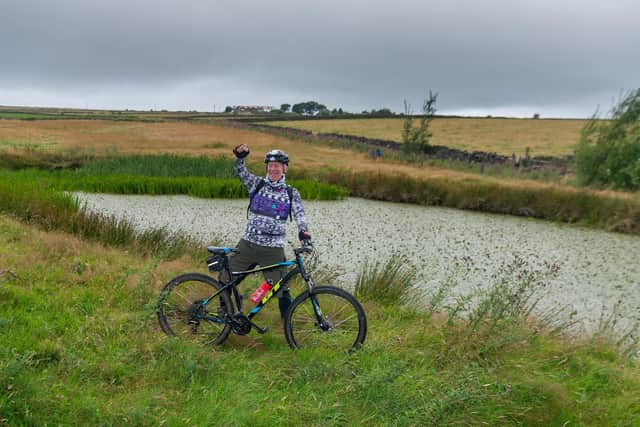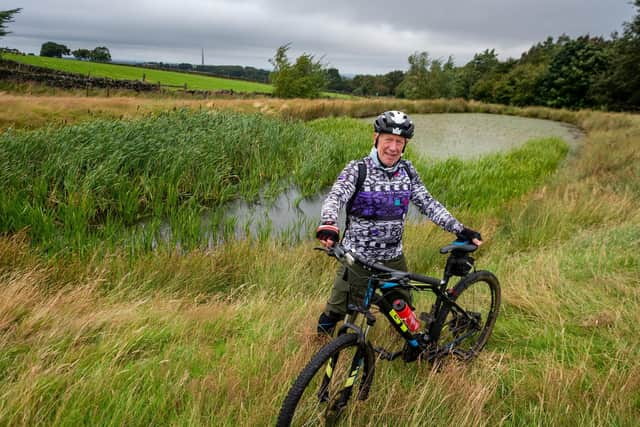Meet the Yorkshire man whose lockdown restlessness led to him visiting the sources of 100 rivers
But probably, in fact surely, only one person decided enforced down-time presented an opportunity to visit 100 river sources.
Yet that’s exactly what Peter Giles, a retired teacher and bereavement counsellor from Barnsley, decided to do.
Advertisement
Hide AdAdvertisement
Hide AdAs he put it: “I love cycling and I love the outdoors. When lockdown came along I just looked for ways to break the lock.”


He’s just completed the 100th source – the West or East Okement River in Devon – nine months after he started out on his unusual quest.
Bringing up the century on Dartmoor was entirely appropriate given how the venture began.
"A friend of mine down in Devon posted a clip of him walking to the source of the River Dart on Dartmoor,” said Mr Giles.
Advertisement
Hide AdAdvertisement
Hide Ad“It was liberating when there were so many restrictions and that experience of seeing what he did germinated in my head and I started to visit some local ones.”


He started with the River Dearne, which runs into his home town of Barnsley from its source at Birdsedge, Kirklees, on November 16 last year.
The 69-year-old used his bike as far as possible on his travels. He didn’t initially set himself a numerical target but the idea soon formed through recollection of a popular book written by his friend Simon Warren called 100 Greatest Cycling Climbs about the best hill climbs in Britain.
Mr Giles acknowledged that “in a way I sort of plagiarised his idea and thought let’s do that.
Advertisement
Hide AdAdvertisement
Hide Ad“It gave a sort of focus and structure to aim for 100," he added.
A love of maps has underpinned research of where the actual sources of rivers are though there isn’t always complete agreement about where sources are situated.
Sometimes it’s easy – the Trent and the Tees have a stone in the ground – while others can provoke heated debate.
They include the Ouse, in North Yorkshire, with Mr Giles recalling meeting “some people on my travels who had very strong views on it.”
Advertisement
Hide AdAdvertisement
Hide AdMr Giles said his partner, Sue, wasn’t surprised by his unusual mission because she’s familiar with his restless nature. And his five adult children?
“They are very happy that I’m happy,"he said. “I’m pushing 70, I could be sitting in my old chair with my slippers and pipe and them having to worry about me and my health and whether I’m okay or not.
“But they can see what I’m doing and I’m one of the happiest people on the planet, probably.”
The pick of the 100 river sources Peter Giles visited was tucked away in the picturesque Mendip Hills in Somerset.
Advertisement
Hide AdAdvertisement
Hide Ad“My favourite was the River Chew which I loved – it was bubbling out from the bottom of an old tree,” he said. At the other end of the spectrum was the source of the Rother, near Clay Cross in Derbyshire, which was “more like a broken exposed sewer”.
Mr Giles said: “It took me to some parts of the world I’d never gone to before. I’ve seen amazing scenery I would never otherwise have experienced.” Mr Giles doesn’t plan to rest-up. He’s already on to his next venture – 100 river estuaries.
Comment Guidelines
National World encourages reader discussion on our stories. User feedback, insights and back-and-forth exchanges add a rich layer of context to reporting. Please review our Community Guidelines before commenting.